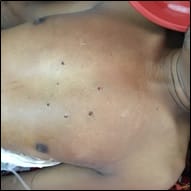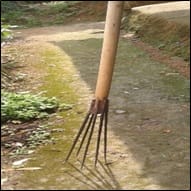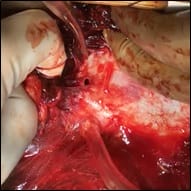Management of penetrating cardiac injury in a tertiary hospital in Northeast India
S Thokchom C.1, Laitonjam C.2*, Nongmaithem M.3, C Arambam N.4
DOI: https://doi.org/10.17511/ijmrr.2020.i01.07
1 Chito S Thokchom, Associate Professor (CTVS), Department of Surgery, Regional Institute of Medical Sciences, Imphal, Manipur, India.
2* Chinglensana Laitonjam, Assistant Professor, Department of Surgery, Regional Institute of Medical Sciences, Imphal, Manipur, India.
3 Mackson Nongmaithem, Senior Resident, Department of Surgery, Regional Institute of Medical Sciences, Imphal, Manipur, India.
4 Nejoobala C Arambam, Postgraduate trainee, Department of Surgery, Regional Institute of Medical Sciences, Imphal, Manipur, India.
Background: Penetrating cardiac injuries are rare and considered the most lethal of all trauma patients. Managing cardiac injuries is a great challenge for the trauma surgeons and the outcome of the treatment of such critical condition depends on the mechanism of injury, haemodynamic status of the patients at the time of presentation, heart chamber involved and other associated injuries. Materials and Methods: This is a prospective observational study of consecutive six patients with penetrating cardiac injuries from January 2015 to December 2019 treated in Regional Institute of Medical Sciences, Imphal, India. eFAST and CT scan of the chest were the main imaging methods used for diagnosis. All patients underwent tube thoracostomy for associated haemothorax in the emergency ward. Results: All the patients had penetrating cardiac injuries due to stabbing. Five (63.3%) patients presented with features of cardiac tamponade or with severe hypotension (systolic BP less than 80 mmHg) and one (16.7%) patient who was haemodynamically stable at the time of presentation had developed features of cardiac tamponade after 24 hours. Four patients had undergone emergency left anterolateral thoracotomy, one patient had undergone median sternotomy, and one patient underwent left anterolateral thoracotomy on the second day after admission. Conclusion: A high index of suspicion for cardiac trauma is extremely important in patients presented with penetrating thoracic injuries or upper abdominal injuries. Computed tomography of the chest can show the haemopericardium giving detailed information of associated pulmonary injury and hemothorax. Prompt diagnosis and early surgical intervention play a vital role to save these critically injured patients.
Keywords: Penetrating cardiac injury, Thoracotomy, Median sternotomy, Haemopericardium, Haemothorax.
| Corresponding Author | How to Cite this Article | To Browse |
|---|---|---|
| , Assistant Professor, Department of Surgery, Regional Institute of Medical Sciences, Imphal, Manipur, India. Email: |
Thokchom CS, Laitonjam C, Nongmaithem M, Arambam NC. Management of penetrating cardiac injury in a tertiary hospital in Northeast India. Int J Med Res Rev. 2020;8(1):45-50. Available From https://ijmrr.medresearch.in/index.php/ijmrr/article/view/1130 |


 ©
© 


